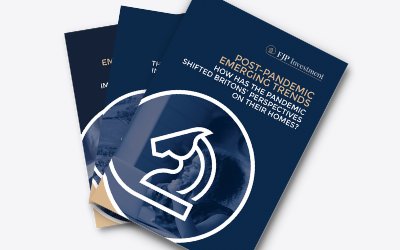Buy-to-Let Mortgage vs Let-to-Buy Mortgage
A buy-to-let mortgage is the more well-known type of mortgage where a property investor will purchase a property with the intention of letting it out for rental income. As a rule, this kind of investment requires the investor to get a buy-to-let mortgage for that reason.
A let-to-buy mortgage, on the other hand, is designed for those that wish to let out their current property while simultaneously purchasing a new one. The current property will need to be on a let-to-buy mortgage, whereas the new one will need to be on a residential mortgage, with each mortgage being tailored for a specific purpose.
One reason why someone might want to consider a let-to-buy mortgage is where they are having problems selling their existing home while they need to move a way to a different area due to work commitments. This type of mortgage usually requires the mortgagee to put down a larger deposit than a residential one.
The basics of a let-to-buy mortgage
When you use a let-to-buy mortgage, you’re actually applying for two distinct loans at once. The principle is that you can pay off your present mortgage by renting out the house you now own. After that, you’ll need a new loan to cover the purchase of your new home.
Once you’ve remortgaged your present property, you may begin renting it out. You’ll be able to use part of the equity in your present house as a down payment on a new one.

You can choose a new lender for the let-to-buy mortgage or stay with your existing lender; you can shop around for the best deal. A typical residential mortgage application will be required to get the loan on the home you’re moving into. If you fit the criteria and can afford a mortgage, then this step should be simple for you.
What are the let-to-buy lending requirements?
A lender will assess your let-to-buy mortgage application based on the potential level of rental income from the property, and not on your salary. Further requirements that the lender will use to figure out if you’re eligible are as follow:
- The applicant must typically be at least 25 years old.
- The applicant must typically not be over the age of about 70 years of age.
- The deposit or equity required is quite high and usually up to about 25%.
- You can only borrow about 75% of the value of the property.
- The lender will expect that the rental income of your current property to be at least 125% of the mortgage interest.
- As evidence of the preceding point, lenders will typically require proof of potential rental income from a letting agent confirming the amount of rental income that can be expected from your property.
- The lender will also want to see evidence that your rental income will be more than what your mortgage payments will be.
- To prove that you meet the criteria, you will need to demonstrate that you are indeed purchasing a new property.
- Finally, as with a residential mortgage, you will need to have a good enough credit score to show that you can manage your finances responsibly.
The typical reasons for needing a let-to-buy mortgage
For people who don’t want to or are unable to sell their current house before purchasing a new one, let-to-buy mortgages are an excellent option. A lot of couples who want to live together but don’t want to sell their homes apply for this type of mortgage as it suits their circumstances.
Furthermore, sometimes the cost of selling up before moving can be beyond the current finances of some. The let-to-buy mortgage can help by reducing costs while simultaneously bringing in a passive income from monthly rental income. In addition to these reasons, there are others worth looking at.
For example, time pressure can be a major factor for some. If, say, you need to move quickly because you have to move for work at the drop of a hat, and have not got the time to sell, then this type of mortgage arrangement is ideal for you.
Like most markets, the housing market goes through cycles, and sometimes it’s not the optimal time to buy property, so the housing market will slump. At times like this, selling your house may be much more difficult, and so you may have to hold onto your property for longer than you want to until market conditions pick up.
Another reason could be that you intend to move back into your property after a period. For example, you may be moving with your job for a few years but want to return to your old house and neighbourhood at a later date.
Another common reason for opting for a let-to-buy mortgage loan is for the purpose of property investing. You want to buy a new home to live in but decide to keep your old one as an investment. Because you have lived in the property and are very familiar with its strengths and weaknesses, as well as the surrounding area, you can take full advantage of this.
ARE YOU READY TO START INVESTING?
Subscribe to our mailing list now for exclusive deals, investment guides and the latest information from the property market.







